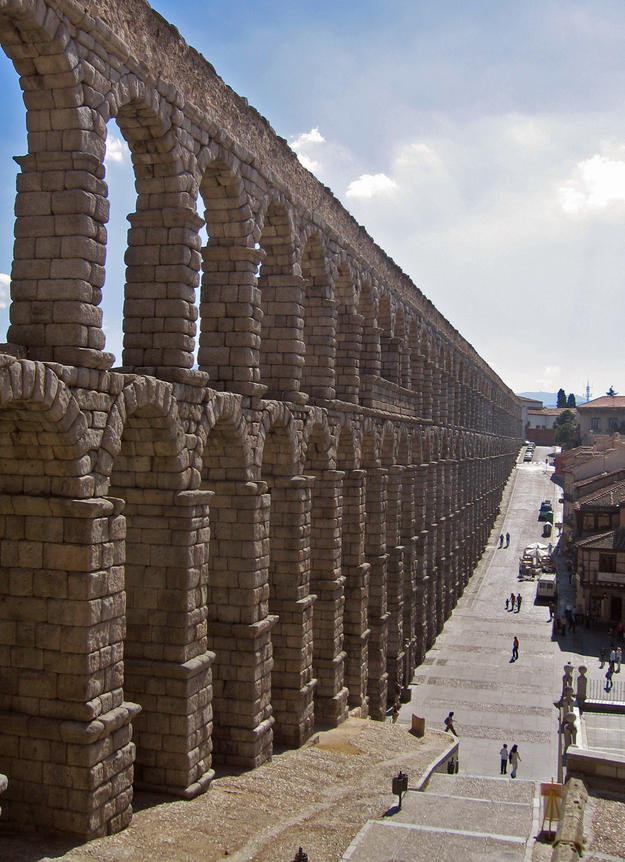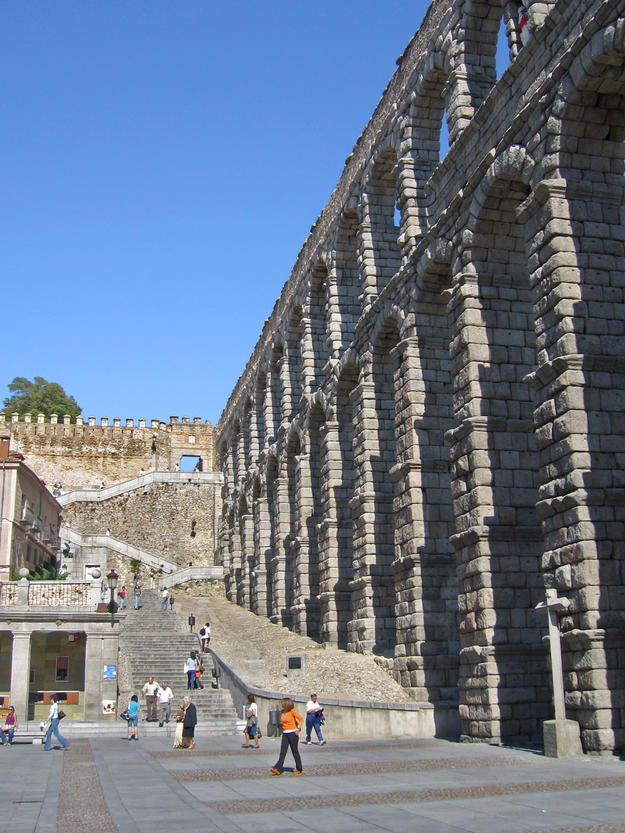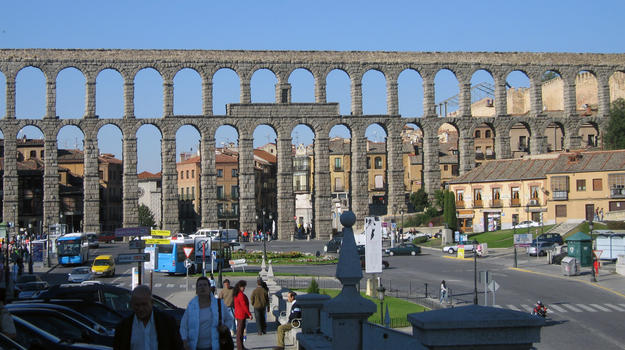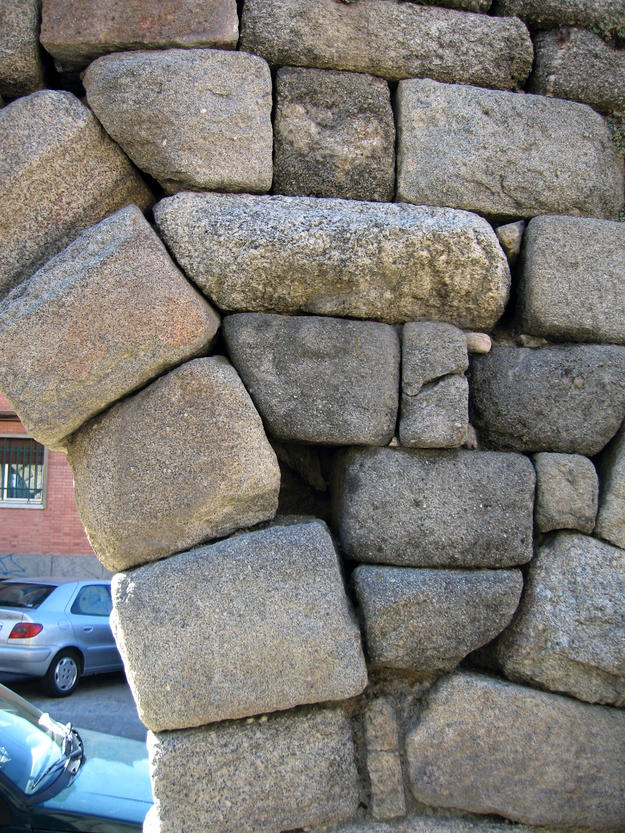Aqueduct of Segovia
Site History and Significance
The Aqueduct of Segovia was built during the second half of the 1st century A.D. under the rule of the Roman Empire and supplied water from the Frío River to the city into the 20th century. The remaining portion of the structure stands 28.5 meters tall at its maximum height and nearly 6 additional meters deep in the main section. Along 14 kilometers of rolling landscape, the aqueduct adjusts to the contours of the valley, hills, and city and creates a sense of grandeur and monumentality. The pillars and arches of its tall, two-story arcades are made of solid blocks of stone fit closely together with little or no mortar, and the lower arches alternate in height according to the structure’s adaptation to the contours of the land.
Detrimental reconstruction occurred in the 15th and 16th centuries, and not until the 1970s and 1990s was there urgent conservation intervention. The aqueduct was inscribed on the World Heritage list in 1985 and stands prominently in the urban landscape of Segovia. The Aqueduct of Segovia remains one of the most intact Roman aqueducts in Europe.
2006 World Monuments Watch
The Aqueduct of Segovia was placed on the 2006 World Monuments Watch, drawing international attention to the overall condition of the structure. Although the aqueduct remains intact there was no comprehensive management plan or funding to address the erosion of the stones, the increase of vibrations and pollution from cars, and heavy vegetation. The Municipality of Segovia proposed a comprehensive conservation project at the aqueduct that not only focused on the entire structure, but also its context and surrounding environment.
WMF Spain brought together the Ministry of Culture, the regional government of Castilla y León, and other local institutions to collaborate to implement the project. In February 2006, an initial meeting was held in Segovia to discuss the implementation of the conservation plan and how best to protect the integrity of the hydraulic works and their surroundings.
In November 2009, a technical workshop was held in Segovia in collaboration with the World Heritage Center of UNESCO. The workshop confirmed the urgent need to implement a management plan to protect and maintain the monument. The aqueduct was highlighted in the exhibition, Treasures along the Route of Santiago de Compostela in Castile-León, at the Queen Sofia Spanish Institute in New York City in late winter 2010.
The Aqueduct of Segovia is a unique structure from the Roman Empire that still conveys its original character and remains a prominent and evocative feature of the regional landscape It represents both the expansion of the Roman Empire during the 1st century A.D. and the attention to aesthetics and functionality that are so strongly associated with the engineering prowess of the Roman world
The Aqueduct of Segovia functioned for many centuries after the fall of the Roman Empire and served the communities of Segovia well into the modern era. Today it is one of the features of the landscape of Castilla y León that gives character to the region and is well-deserving of the attention it is receiving for its continued protection and stabilization.
Learn More
World Monuments Fund safeguards cultural heritage around the globe, ensuring our treasured places are preserved for present and future generations.
Sign up for our newsletter to receive regular updates on our projects, stories from the field, upcoming events, and more!
![]()





